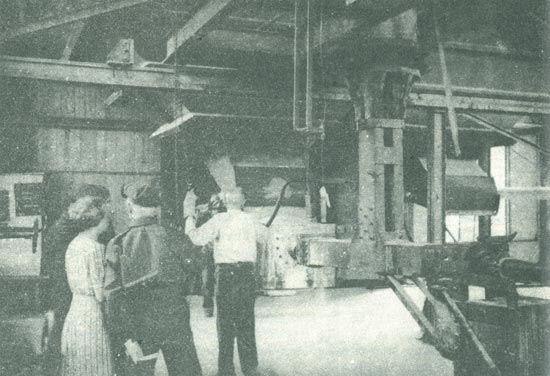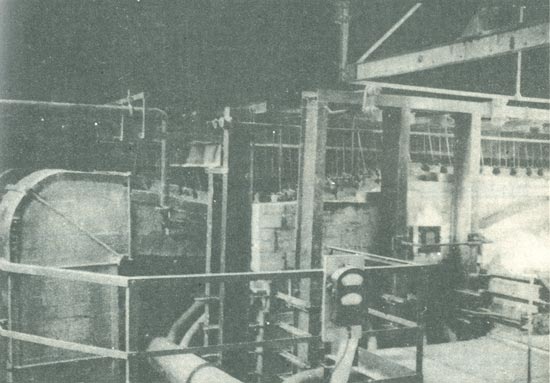| so that the dust could be sucked down and away from the operator. Polishing was carried out to the customary standard and the finished blocks were stood on end for final drying and storing.
Debiteuses were arched in two stages. They were heated up to 1,150° C. during 7 days three at a time in a small arch, the hearth of which was the top of a moveable car. If not required immediately, the debiteuses were transferred to a second and larger arch of the normal type which could hold six and maintain a soaking temperature. These were near the tank and were fired with overhead Selas burners taking the premised gas-air mixture used in the works.
Floaters were also made from the Grossalmerode mixture but these were dried in drying chambers; they were arched in the Clay Rooms and some distance from the tank.
Burner blocks, tiles, standard size bricks were also made, all by hand. These shapes could be heated up near the tank in a moveable muffle built on a wheeled carriage.
5. Warehouse
This building was a new one erected just before the outbreak of war. At the time of the visit, the cutters were working mornings only. The glass was brought in by the overhead monorail system to the top floor and fed down to two similar lower ones. In each shop the cutting tables were set out down the two outsides, with the monorail system and racks for cut glass between them and a central packing section running the whole length of the shop. Normally, packed cases are passed down a shallow chute to the ground floor. Each cutter has a cullet truck, removed when full by service men. (At the machines cullet was thrown into a stretcher-like box easily handled by two men.) The cases used at present are merely frames with a little straw for packing. They were handled readily by small two-wheeled bogies pushed by a single long handle resembling a bent lever.
The cutting tables have wooden tops with inlaid rulers inset about 12" from each edge; they had no splitting devices. Loose loading was not carried out. Rolls for taking paper were fixed above each cut glass rack to facilitate pre-war packing.
The general cleanliness of this factory was striking; all tools were placed in suitable racks, no unnecessary materials were lying about, the caves had a concrete floor and plastered walls and roof.
|





